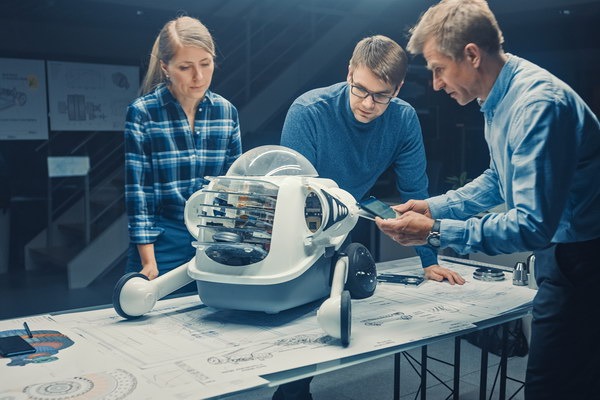3D Design
4 Different Types of Prototypes Inventors Should Know
Many inventors wonder how do I get a prototype of my invention, what types of prototypes are there, and what different functions do they have? Here is a breakdown of the four main types of prototypes and their functions for your product development.

When you have an idea for improving an existing product or developing something new, it is vital that you make a prototype. A prototype is the embodiment of your idea, a product design, which can be used to test its feasibility and get feedback. It can also help you get funding or convince others that your idea has potential: there are many different types, but they all provide insight into the viability and market appeal of your ideas.
Therefore, several factors must be taken into account when creating a new one. At first, for an initial stage, you will want to develop it as cheaply and quickly as possible to save time and money, at this stage a mock up is the most convenient. As you progress through product development and move to more advanced stages, cost effectiveness is replaced by quality of the result and is often replaced by MVPs.
Below, we have summarized the four main types, in order of importance for your feasibility study and development process:
1. Mockup
The most basic, a mockup is simply the outer shell of your product (a paper prototype). There are no functional features, just the visualization of what your product will look like. It may seem the least useful type, but it can actually be very handy for planning product development and the most economical.
Whether on paper or in 3D model format, seeing your product idea visualized through a mockup is a great way to move forward and continue your product development.
2. Basic Prototype
This is a higher level than the mockup. And unlike the mockup, the basic prototype will have some sort of function. If you choose this type for your product, function will often be considered over aesthetics, which means you will be able to see how your product works, with all the essential components to make it work, but the exterior design will take a back seat.
This is where your idea can be really validated, as it has a basic functional purpose, usually made with 3d printing.

3. MVP (Minimum Viable Product)
This type is a working prototype (high fidelity prototyping) that has also been developed aesthetically – essentially a mashup of the two previous mentioned. In this prototype you can see what your idea will look like in the real world and test the user experience: it allows you to test your idea with your target audience and present it to potential investors as a real product design.
Although the previous types were more basic, it is important to keep in mind that MVPs use commercial components, so they are subject to certain size restrictions.

4. MVP Premium
The final type of prototype is the MVP Premium (fully functional device), which includes everything above with the addition of customer-made components. This option would also have improved functionality and aesthetics, making it even more lifelike and ready for mass production.
This final version is made with customised components, especially the PCB (Printed Circuit Board) which will help to reduce the size of the device and improve on its usability as prototype for manufacturing.
You can watch the following video of Lexie Lu for more information:
In short
It’s important to note that none of these prototypes are ready for mass production; they must first go through an additional process, which we usually call Design for Manufacturing (DFM) where we guarantee its manufacturability and point out a number of manufacturers with who to work with.
Not sure where to start with your idea? Do you want to know how to get a product prototype made? Download our free whitepaper, Dare to Invent: the Art of Invention, which explores what it means to be an inventor, along with some handy tips for what to come prepared with when approaching LastBasic with an idea.
Getting your invention made is more affordable than ever
Our sharing economy model makes us very competitive with prices being up to 80% lower than others.
View Pricing
Getting started couldn't be easier
All you have to do is;
Select your package, complete and submit your idea brief for validation, make the payment and begin your onboarding through to a working prototype.
It's that simple!